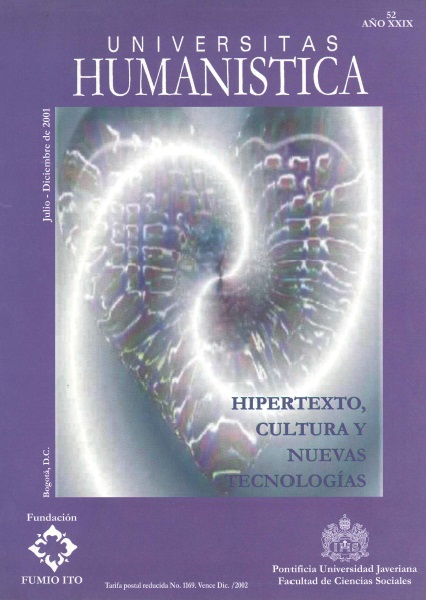Resumen
Paralela pero marginal a la historia hegemónica de la narrativa realista, hay otra historia, la del "libro-juego" (término equivalente a otros ya presentes en la crítica como "novela artefacto", "novela-estructura" o "novela-tipográfica", pero más adecuado al estudio aquí realizado) que vincula en una misma perspectiva a obras como Tristram Shandy de Laurence Sterne con la "antinovela" contemporánea y las novísimas creaciones de la narración hipertextual: textos digitales que permiten la conexión de bloques de información multimedial creando diferentes itinerarios o recorridos de lectura para el lector.
Pertenecen también a esta línea histórica del desarrollo del "libro-juego" algunas de las obras narrativas de Macedonio Fernández (Museo de la novela de la eterna) Jorge Luis Borges [Examen de la obra de Herbert Quain, El jardín de senderos que se bifurcan, Pierre Menard autor del Quijote) y Julio Cortázar (Rayuela). El análisis de estas obras las coloca como ejemplo paradigmático de los precedentes literarios de las recientes producciones de la narrativa hipertextual. Para confirmar esta relación histórica se examinan dos dimensiones constitutivas del libro-juego: una estética del juego, configurada desde la reflexión filosófica, y una estética del diseño abordada a partir de la doble producción que conforman la escritura y la lectura.

La revista Universitas Humanística se encuentra registrada bajo la licencia Creative Commons Reconocimiento 4.0 Internacional. Por lo tanto, esta obra se puede reproducir, distribuir y comunicar públicamente en formato digital, siempre que se reconozca el nombre de los autores y a la Pontificia Universidad Javeriana. Se permite citar, adaptar, transformar, autoarchivar, republicar y crear a partir del material, para cualquier finalidad (incluso comercial), siempre que se reconozca adecuadamente la autoría, se proporcione un enlace a la obra original y se indique si se han realizado cambios. La Pontificia Universidad Javeriana no retiene los derechos sobre las obras publicadas y los contenidos son responsabilidad exclusiva de los autores, quienes conservan sus derechos morales, intelectuales, de privacidad y publicidad.
El aval sobre la intervención de la obra (revisión, corrección de estilo, traducción, diagramación) y su posterior divulgación se otorga mediante una licencia de uso y no a través de una cesión de derechos, lo que representa que la revista y la Pontificia Universidad Javeriana se eximen de cualquier responsabilidad que se pueda derivar de una mala práctica ética por parte de los autores. En consecuencia de la protección brindada por la licencia de uso, la revista no se encuentra en la obligación de publicar retractaciones o modificar la información ya publicada, a no ser que la errata surja del proceso de gestión editorial. La publicación de contenidos en esta revista no representa regalías para los contribuyentes.


